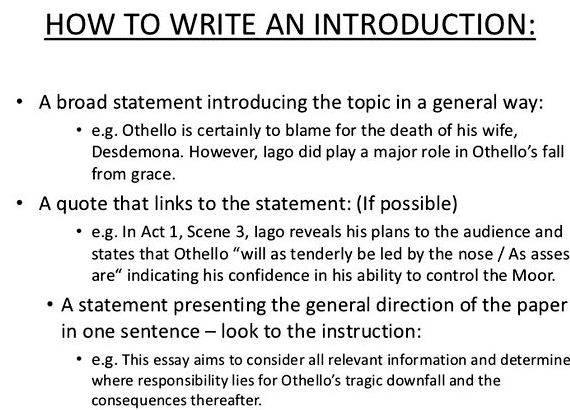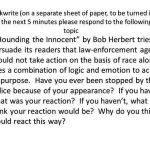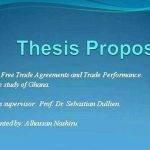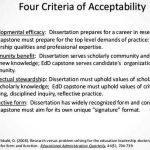Our consultants assist students to focus on a specific gap in the knowledge and meet
the requirements in this chapter needed to defend the choice of that gap.
Chapter 1, with a highly focused review of the literature, and is normally the “prospectus” that a committee approves before the “proposal” to start research is approved. After the prospectus is approved, some of the review of literature may be moved into Chapter 2, which then becomes part of the proposal to do research.
Chapter 1 is the engine that drives the rest of the document, and it must be a complete empirical argument as is found in courts of law. It should be filled with proofs throughout. It is not a creative writing project in a creative writing class; hence, once a word or phrase is established in Chapter 1, use the same word or phrase throughout the dissertation. The content is normally stylized into five chapters, repetitive in some sections from dissertation to dissertation. A lengthy dissertation may have more than five chapters, but regardless, most universities limit the total number of pages to 350 due to microfilming and binding considerations in libraries in those institutions requiring hard copies.
Use plenty of transitional words and sentences from one section to another, as well as subheadings, which allow the reader to follow the writer’s train of thought. Following is an outline of the content of the empirical argument of Chapter 1. Universities often arrange the content in a different order, but the subject matter is the same in all dissertations because it is an empirical “opening statement” as might be found in a court of law. (Note that a dissertation could also be five pages of text and 50 pages of pictures of dragonfly wings and qualify for a Doctor’s degree in entomology.)
State the general field of interest in one or two paragraphs, and end with a sentence that states what study will accomplish. Do not keep the reader waiting to find out the precise subject of the dissertation.
Background of the Problem
This section is critically important as it must contain some mention of all the subject matter in the following Chapter 2 Review of the Literature 2 and the methodology in Chapter 3. Key words should abound that will subsequently be used again in Chapter 2. The section is a brief two to four page summary of the major findings in the field of interest that cites the most current finding in the subject area. A minimum of two to three citations to the literature per paragraph is advisable. The paragraphs must be a summary of unresolved issues, conflicting findings, social concerns, or educational, national, or international issues, and lead to the next section, the statement of the problem. The problem is the gap in the knowledge. The focus of the Background of the Problem is where a gap in the knowledge is found in the current body of empirical (research) literature.
Statement of the Problem
Arising from the background statement is this statement of the exact gap in the knowledge discussed in previous paragraphs that reviewed the most current literature found. A gap in the knowledge is the entire reason for the study, so state it specifically and exactly.

Use the words “gap in the knowledge.” The problem statement will contain a definition of the general need for the study, and the specific problem that will be addressed.
Purpose of the Study
The Purpose of the Study is a statement contained within one or two paragraphs that identifies the research design, such as qualitative, quantitative, mixed methods, ethnographic, or another design. The research variables, if a quantitative study, are identified, for instance, independent, dependent, comparisons, relationships, or other variables. The population that will be used is identified, whether it will be randomly or purposively chosen, and the location of the study is summarized. Most of these factors will be discussed in detail in Chapter 3.
Significance of the Study
The significance is a statement of why it is important to determine the answer to the gap in the knowledge, and is related to improving the human condition. The contribution to the body of knowledge is described, and summarizes who will be able to use the knowledge to make better decisions, improve policy, advance science, or other uses of the new information. The “new” data is the information used to fill the gap in the knowledge.
Primary Research Questions
The primary research question is the basis for data collection and arises from the Purpose of the Study. There may be one, or there may be several. When the research is finished, the contribution to the knowledge will be the answer to these questions. Do not confuse the primary research questions with interview questions in a qualitative study, or survey questions in a quantitative study. The research questions in a qualitative study are followed by both a null and an alternate hypothesis.
A hypothesis is a testable prediction for an observed phenomenon, namely, the gap in the knowledge. Each research question will have both a null and an alternative hypothesis in a quantitative study. Qualitative studies do not have hypotheses. The two hypotheses should follow the research question upon which they are based. Hypotheses are testable predictions to the gap in the knowledge. In a qualitative study the hypotheses are replaced with the primary research questions.
In Chapter 1 this is a summary of the methodology and contains a brief outline of three things: (a) the participants in a qualitative study or thesubjects of a quantitative study (human participants are referred tyo as participants, non-human subjects are referred to as subjects), (b) the instrumentation used to collect data, and (c) the procedure that will be followed. All of these elements will be reported in detail in Chapter 3. In a quantitative study, the instrumentation will be validated in Chapter 3 in detail. In a qualitative study, if it is a researcher-created questionnaire, validating the correctness of the interview protocol is usually accomplished with a pilot study. For either a quantitative or a qualitative study, using an already validated survey instrument is easier to defend and does not require a pilot study; however, Chapter 3 must contain a careful review of the instrument and how it was validated by the creator.
In a qualitative study, which usually involves interviews, the instrumentation is an interview protocol – a pre-determined set of questions that every participant is asked that are based on the primary research questions. A qualitative interview should contain no less than 10 open-ended questions and take no less than 1 hour to administer to qualify as “robust” research.
In the humanities, a demographic survey should be circulated with most quantitative and qualitative studies to establish the parameters of the participant pool. Demographic surveys are nearly identical in most dissertations. In the sciences, a demographic survey is rarely needed.
The theoretical framework is the foundational theory that is used to provide a perspective upon which the study is based. There are hundreds of theories in the literature. For instance, if a study in the social sciences is about stress that may be causing teachers to quit, Apple’s Intensification Theory could be cited as the theory was that stress is cumulative and the result of continuing overlapping, progressively stringent responsibilities for teachers that eventually leads to the desire to quit. In the sciences, research about new species that may have evolved from older, extinct species would be based on the theory of evolution pioneered by Darwin.
Some departments put the theoretical framework explanation in Chapter 1; some put it in Chapter 2.
Assumptions, Limitations, and Scope (Delimitations)
Assumptions are self-evident truths. In a qualitative study, it may be assumed that participants be highly qualified in the study is about administrators. It can be assumed that participants will answer truthfully and accurately to the interview questions based on their personal experience, and that participants will respond honestly and to the best of their individual abilities.
Limitations of a study are those things over which the research has no control. Evident limitations are potential weaknesses of a study. Researcher biases and perceptual misrepresentations are potential limitations in a qualitative study; in a quantitative study, a limitation may be the capability of an instrument to accurately record data.
Scope is the extent of the study and contains measurements. In a qualitative study this would include the number of participants, the geographical location, and other pertinent numerical data. In a quantitative study the size of the elements of the experiment are cited. The generalizability of the study may be cited. The word generalizability, which is not in the Word 2007 dictionary, means the extent to which the data are applicable in places other than where the study took place, or under what conditions the study took place.
Delimitations are limitations on the research design imposed deliberately by the researcher. Delimitations in a social sciences study would be such things as the specific school district where a study took place, or in a scientific study, the number of repetitions.
Definition of Terms
The definition of terms is written for knowledgeable peers, not people from other disciplines As such, it is not the place to fill pages with definitions that knowledgeable peers would know at a glance. Instead, define terms that may have more than one meaning among knowledgeable peers.
Summarize the content of Chapter 1 and preview of content of Chapter 2.
Source: Barbara von Diether, EdD
This page is brought to you by the OWL at Purdue (https://owl.english.purdue.edu/). When printing this page, you must include the entire legal notice at bottom.
Tips and Examples for Writing Thesis Statements
This resource provides tips for creating a thesis statement and examples of different types of thesis statements.
Contributors: Elyssa Tardiff, Allen Brizee
Last Edited: 2014-02-10 10:44:43
Tips for Writing Your Thesis Statement
1. Determine what kind of paper you are writing:
- An analytical paper breaks down an issue or an idea into its component parts, evaluates the issue or idea, and presents this breakdown and evaluation to the audience.
- An expository (explanatory) paper explains something to the audience.
- An argumentative paper makes a claim about a topic and justifies this claim with specific evidence. The claim could be an opinion, a policy proposal, an evaluation, a cause-and-effect statement, or an interpretation. The goal of the argumentative paper is to convince the audience that the claim is true based on the evidence provided.
If you are writing a text that does not fall under these three categories (e.g. a narrative), a thesis statement somewhere in the first paragraph could still be helpful to your reader.
2. Your thesis statement should be specificit should cover only what you will discuss in your paper and should be supported with specific evidence.
3. The thesis statement usually appears at the end of the first paragraph of a paper.
4. Your topic may change as you write, so you may need to revise your thesis statement to reflect exactly what you have discussed in the paper.
Thesis Statement Examples
Example of an analytical thesis statement:
An analysis of the college admission process reveals one challenge facing counselors: accepting students with high test scores or students with strong extracurricular backgrounds.
The paper that follows should:
- Explain the analysis of the college admission process
- Explain the challenge facing admissions counselors
Example of an expository (explanatory) thesis statement:
The life of the typical college student is characterized by time spent studying, attending class, and socializing with peers.
The paper that follows should:
- Explain how students spend their time studying, attending class, and socializing with peers
Example of an argumentative thesis statement:
High school graduates should be required to take a year off to pursue community service projects before entering college in order to increase their maturity and global awareness.
The paper that follows should:
- Present an argument and give evidence to support the claim that students should pursue community projects before entering college
1995-2016 by The Writing Lab The OWL at Purdue and Purdue University. All rights reserved. This material may not be published, reproduced, broadcast, rewritten, or redistributed without permission. Use of this site constitutes acceptance of our terms and conditions of fair use .




 National history day 2016 thesis writing
National history day 2016 thesis writing Thesis writing services in lahore
Thesis writing services in lahore Hounding the innocence thesis writing
Hounding the innocence thesis writing Thesis proposal presentation ppt images
Thesis proposal presentation ppt images Nspires change proposal title of thesis
Nspires change proposal title of thesis






